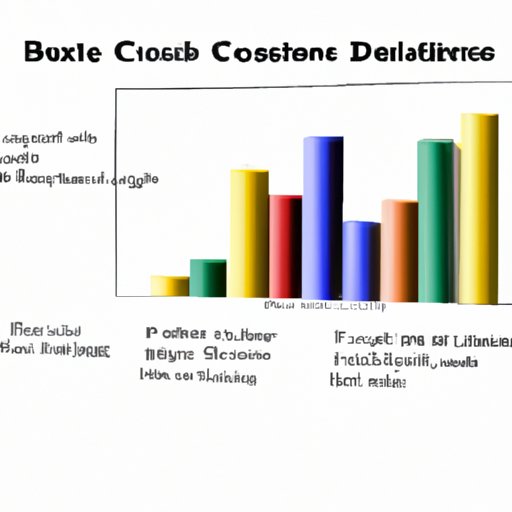Exploring the Basics of CDs in Finance
When it comes to investing and financial planning, one option that you may have come across is a Certificate of Deposit (CD). But what exactly is a CD and how does it work? This article will explore the basics of CDs and provide an overview of how they can be used in financial markets.

A. Definition of a Certificate of Deposit
A CD is a type of savings account offered by banks and other financial institutions. It requires the investor to deposit a lump sum of money for a fixed period of time, usually from three months to five years. In exchange for this commitment, the bank pays a higher interest rate than a regular savings account, making the CD an attractive investment option for those looking to grow their money over the long term.

B. Different Types of CDs
There are several different types of CDs available, each with its own set of terms and conditions. These include:
- Standard CDs: These are the most common type of CD and typically require a minimum deposit amount of $500 or more. The interest rate is often fixed, meaning that it will not change during the life of the CD.
- Jumbo CDs: These CDs require a much larger initial deposit, usually between $25,000 and $100,000. They offer higher interest rates than standard CDs, but they also come with stricter terms and conditions.
- No-Penalty CDs: These CDs do not charge a penalty if the investor needs to withdraw their money before the maturity date. However, they usually offer lower interest rates than other types of CDs.
C. What Are The Benefits of Investing In CDs?
Investing in CDs can be a great way to save for the future. CDs offer many advantages, including:
- Guaranteed returns: CDs are insured by the Federal Deposit Insurance Corporation (FDIC) up to a certain amount, so investors can be sure their principal investment is safe. Additionally, the interest rate is fixed, so investors know exactly how much they will earn.
- Higher interest rates: CDs typically offer higher interest rates than regular savings accounts, allowing investors to increase their savings faster.
- Flexible terms: Investors can choose the length of the CD, ranging from three months to five years, depending on their needs and goals.
A Guide to Investing in Certificates of Deposit
Investing in a CD can be a great way to grow your savings, but it’s important to understand the different types of CDs and how to choose the right one for you. Here are some tips for investing in CDs:
A. How To Choose The Right CD For You
When choosing a CD, it’s important to consider a few factors, such as:
- Your financial goals: Are you looking to save for retirement or just trying to build a rainy day fund? Your goals should help determine the length of the CD as well as the amount you should invest.
- Your risk tolerance: CDs are generally considered to be low-risk investments, but it’s still important to consider your risk tolerance when deciding which CD is right for you.
- The interest rate: Different banks offer different interest rates, so it’s important to shop around and compare rates to find the best deal.
B. Factors To Consider When Deciding On A CD
When selecting a CD, there are also some other factors to consider, such as:
- Early withdrawal penalties: Some CDs impose a penalty if you need to withdraw your money before the maturity date. Make sure you understand the terms and conditions before investing.
- Minimum balance requirements: Some CDs require you to maintain a certain balance in order to keep the account open. Make sure you check the minimum balance requirements before opening a CD.
- Liquidity: CDs are not as liquid as other investments, so make sure you are comfortable with the level of liquidity before investing.
The Pros and Cons of Using CDs for Financial Planning
CDs can be a great tool for financial planning, but it’s important to understand both the advantages and disadvantages before investing. Here are some of the pros and cons of using CDs for financial planning:
A. Advantages Of CDs
Some of the advantages of investing in CDs include:
- Guaranteed returns: CDs are insured by the FDIC up to a certain amount, so investors can be sure their principal investment is safe.
- Higher interest rates: CDs typically offer higher interest rates than regular savings accounts, allowing investors to increase their savings faster.
- Low risk: CDs are considered to be low-risk investments, making them a good choice for conservative investors.
B. Disadvantages Of CDs
On the other hand, there are some drawbacks to investing in CDs, including:
- Lack of liquidity: CDs are not as liquid as other investments, so it can be difficult to access your money before the maturity date.
- Early withdrawal penalties: Many CDs impose a penalty if you need to withdraw your money before the maturity date.
- Low returns: CDs typically offer lower returns than other investments, such as stocks and bonds.
What You Need to Know About CD Accounts
In addition to understanding the pros and cons of investing in CDs, it’s also important to have a basic understanding of how CD accounts work. Here are some key points to keep in mind:
A. Interest Rates
The interest rate offered on a CD is typically fixed, meaning that it will not change during the life of the CD. However, some banks offer variable-rate CDs, which can be more risky but offer potential for higher returns.
B. Maturity Dates
CDs have a fixed maturity date, which is the date when the CD account will mature and the funds will be available for withdrawal. Make sure you understand the terms and conditions of the CD before investing.
C. Withdrawal Penalties
Many CDs impose a penalty if the investor needs to withdraw their money before the maturity date. Be sure to read the terms and conditions of the CD carefully before investing.
An Overview of How CDs Work in Financial Markets
CDs are commonly used in financial markets as a way to diversify portfolios and manage risk. Here’s an overview of how CDs work in financial markets:
A. How CDs Are Traded
CDs are typically traded in the secondary market, where investors buy and sell existing CDs. Investors can buy and sell CDs through a brokerage firm or directly from the issuing bank.

B. How CDs Impact Market Conditions
CDs can have a significant impact on market conditions. When interest rates are low, investors tend to purchase more CDs, driving up demand and pushing up prices. Conversely, when interest rates rise, investors tend to sell their CDs, driving down prices.
Strategies for Maximizing Returns with CDs
Investing in CDs can be a great way to grow your savings, but there are also some strategies you can use to maximize your returns. Here are some tips for getting the most out of your CD investments:

A. Investing in Multiple CDs
One strategy for maximizing returns is to invest in multiple CDs with different maturity dates. This allows you to take advantage of different interest rates over time, while also providing flexibility in case you need to access your money sooner than expected.
B. Laddering Your CDs
Another strategy for maximizing returns is laddering your CDs. This involves investing in multiple CDs with staggered maturity dates, so that some of the CDs will mature each year. This allows you to take advantage of higher interest rates over time, while also giving you access to your money if needed.

C. Shopping Around for the Best CD Rates
It’s also important to shop around for the best CD rates. Different banks and financial institutions offer different interest rates, so it’s important to compare rates before investing.
Investing in CDs can be a great way to save for the future and grow your money over the long term. By understanding the basics of CDs and following the tips outlined in this article, you can maximize your returns and reach your financial goals.
(Note: Is this article not meeting your expectations? Do you have knowledge or insights to share? Unlock new opportunities and expand your reach by joining our authors team. Click Registration to join us and share your expertise with our readers.)
